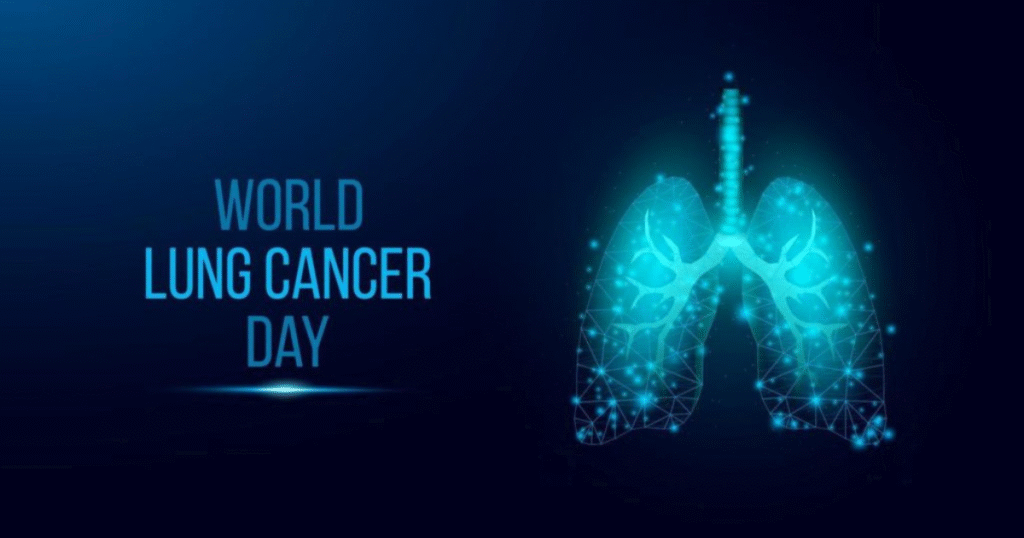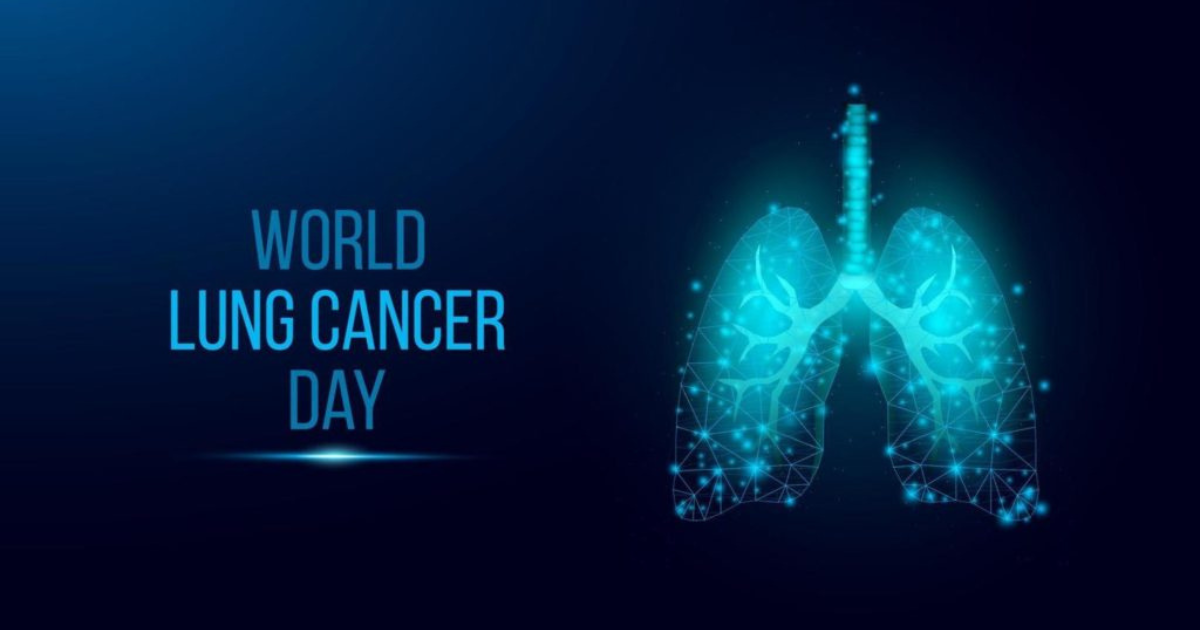August 1: World Lung Cancer Day – Understanding, Preventing, and Fighting Lung Cancer

Lung cancer is one of the deadliest forms of cancer, claiming millions of lives every year. Yet, despite its prevalence, many people still lack awareness about its causes, symptoms, and the ways to prevent it. August 1 marks World Lung Cancer Day, a day dedicated to raising awareness about this silent killer and highlighting the importance of early detection, prevention, and treatment options.
Do you know that smoking remains the leading cause of lung cancer, but non-smokers are also at risk? How can we better understand this disease and protect ourselves and our loved ones? In this blog, we’ll explore lung cancer facts, its risk factors, and what you can do to prevent it. Keep reading to discover how early intervention can make all the difference in fighting lung cancer.
Understanding Lung Cancer: What Is It and Why Should You Care?
Lung cancer, as the name suggests, begins in the lungs and is often associated with smoking, although many non-smokers also develop this disease. It is the leading cause of cancer deaths worldwide, responsible for nearly 1 in 5 cancer-related deaths. The primary reason lung cancer is so deadly is that it’s often diagnosed at later stages when treatment options are more limited.
Two Types of Lung Cancer
- Non-Small Cell Lung Cancer (NSCLC): The most common type, accounting for about 85% of all lung cancer cases. It tends to grow more slowly and is treatable if caught early.
- Small Cell Lung Cancer (SCLC): Less common but more aggressive, SCLC spreads rapidly and is often diagnosed at an advanced stage. It is primarily associated with smoking.
Understanding these two types is crucial in determining the best treatment plan. While NSCLC might be treated with surgery, chemotherapy, and radiation, SCLC requires a more aggressive approach, often combining chemotherapy with radiation therapy.
Why Lung Cancer Awareness Is Critical
Lung cancer is sometimes overlooked or misunderstood. Many individuals associate it solely with smokers, but nearly 10-15% of lung cancer cases occur in non-smokers, especially those exposed to environmental factors like radon or secondhand smoke. The goal of World Lung Cancer Day is to break the stigma, raise awareness about the risk factors, and encourage early detection.
Key Risk Factors for Lung Cancer: What You Need to Know
While smoking is the leading risk factor for lung cancer, there are several other significant risk factors that can increase the likelihood of developing this deadly disease. Let’s dive deeper into these risk factors and see how you can minimize your exposure.
1. Smoking and Secondhand Smoke
It’s no surprise that smoking is the most significant risk factor for lung cancer. Cigarettes contain harmful chemicals that damage the lungs over time. Even secondhand smoke can increase the risk for non-smokers, making it important to avoid exposure to others who smoke.
Did you know?
- Nicotine and other chemicals found in cigarettes can damage DNA, leading to the formation of cancer cells.
- Smokers are 15 to 30 times more likely to develop lung cancer than non-smokers.
2. Radon Exposure
Radon is a colorless, odorless gas that comes from the natural breakdown of uranium in soil, rock, and water. It can accumulate in homes, especially in basements and areas with poor ventilation, and is the second-leading cause of lung cancer in the U.S. According to the Environmental Protection Agency (EPA), radon exposure contributes to 21,000 lung cancer deaths each year.
3. Family History and Genetics
If you have a family history of lung cancer, your risk of developing it may increase. Researchers are still investigating the genetic components, but having a close relative with lung cancer could potentially double your risk.
4. Occupational Exposure
Certain jobs expose workers to carcinogens that can increase lung cancer risk. These include jobs in construction, mining, and manufacturing where employees may be exposed to asbestos, arsenic, and chemical fumes.
5. Air Pollution
Long-term exposure to air pollution, especially in urban environments, can increase the risk of lung cancer. It’s particularly harmful for those who already have existing lung conditions like asthma or COPD.
Early Detection: The Key to Survival
One of the most crucial aspects of battling lung cancer is early detection. When caught early, lung cancer can be treated successfully. Unfortunately, many people don’t show symptoms until the disease has progressed to a later stage.
Screening for Lung Cancer
Lung cancer screening, using a low-dose CT scan, is available for high-risk individuals. The U.S. Preventive Services Task Force (USPSTF) recommends annual lung cancer screening for those aged 55-80 who have a history of heavy smoking and currently smoke or have quit within the last 15 years. Early screening is vital as it can detect lung cancer before symptoms appear, when the cancer is more treatable.
Who should consider screening?
- People aged 55-80 who have smoked 30 or more pack-years.
- Those who currently smoke or have quit within the past 15 years.
Know the Symptoms
While lung cancer often shows no symptoms in the early stages, being aware of the following signs can help prompt earlier diagnosis:
- Persistent cough
- Coughing up blood
- Shortness of breath
- Chest pain
- Hoarseness or wheezing
- Unexplained weight loss
If you experience any of these symptoms, it’s essential to speak with a healthcare provider immediately. Early intervention can improve treatment outcomes.
How Can You Prevent Lung Cancer?
Prevention is always better than cure. While you may not be able to control every risk factor, there are several lifestyle changes you can make to lower your risk of lung cancer.
1. Quit Smoking
Quitting smoking is the single most important step you can take to lower your risk of lung cancer. Within 10 years of quitting, your risk of lung cancer drops to about half that of someone who still smokes.
2. Avoid Secondhand Smoke
Even if you don’t smoke, avoid exposure to secondhand smoke whenever possible. Stay away from places where people smoke, and encourage those around you to quit.
3. Test Your Home for Radon
Consider testing your home for radon, especially if you live in an area known for high radon levels. The EPA recommends taking action if radon levels in your home exceed 4 picocuries per liter (pCi/L).
4. Protect Yourself at Work
If you work in an industry with known lung cancer risks, such as mining or construction, make sure you are using proper protective equipment and follow safety guidelines.
5. Support Lung Cancer Research
Supporting organizations dedicated to lung cancer research, such as the Lung Cancer Foundation of America and American Lung Association, helps fund studies that could lead to earlier detection and more effective treatments.
Conclusion: Take Action and Stay Informed
World Lung Cancer Day serves as a powerful reminder that lung cancer is preventable and treatable when caught early. Awareness and early detection are key to reducing the impact of this deadly disease. Whether it’s through smoking cessation, screening, or radon testing, there are steps you can take to protect yourself and your loved ones.
Stay informed, spread awareness, and make a commitment to take proactive steps in the fight against lung cancer. Share this article with your friends and family, and encourage them to be proactive about their lung health. Together, we can help reduce the impact of lung cancer and work toward a healthier future for all.
What steps will you take to reduce your risk? Let us know in the comments below!




